Hello, gentle readers, and welcome to the RPG Reload, the weekly feature where we'll deck the world for a few credsticks. Each week, we take a look at an RPG from the App Store's past to see how it holds up in the present day. It's a chance for reflecting on important releases, revisiting old favorites, or simply to take a deeper dive than our reviews typically allow. As the present King of Canada, I try to choose a balanced plate of games from week to week to reflect the wide diversity in the genre. If you feel like I'm missing something important, though, make sure to let me know. You can do that by posting in the comments below, stopping by , or by tweeting me at . You might not see your suggestion right away, but it will be added to the master list.

The 1980s were a weird time in America. If the 1960s had been a wild alcohol-soaked and drug-fueled party, the 1970s were more like spending the night curled up beside the toilet because you partied a little too hard. The 1980s started with a wicked hangover, but the country put on its suit, drank a few cups of coffee, and headed back to work. Having mostly forgotten its crisis of conscience that happened after the war in Vietnam, the American nation started to puff up its pride once again. It was an era of crass commercialization, vapid but catchy music, a time when neon colors and the American flag were considered reasonable attire. But behind the bright surface, it wasn't hard to see the darkness swelling up. The same Reaganomics that helped bring the country out of recession had widened the divide between the haves and the have-nots, the government was caught secretly sticking its fingers into international affairs, and xenophobia was running deep thanks to a surging Asian economy and troubles in the Middle East. Luckily, things have totally changed since then.
It was in this atmosphere that one of the most important fiction novels of our time was written. Neuromancer, by William Gibson, probably didn't seem like much at first in 1984. It was a strange piece of dystopian science-fiction that seemed to follow in the footsteps of the bizarre, brilliant works of Philip K. Dick. It didn't take long for the book to catch on with science-fiction fans, and it quickly became a cult favorite in the rising counter-culture that was forming. Its world reflected that of its contemporary America: mega-corporations, the fearful embrace of rapidly-improving technology, terrorism as a means of social control, the rising influence of Japan, and how a person could hold on to their humanity in a world that seemed designed to grind it down a little bit every day. While Neuromancer didn't create the cyberpunk sub-genre, it is to that label as Dragon Quest [] is to JRPGs: a heavily influential work from which many others would draw from ever after. If for some reason you haven't read it yet, I strongly recommend it.
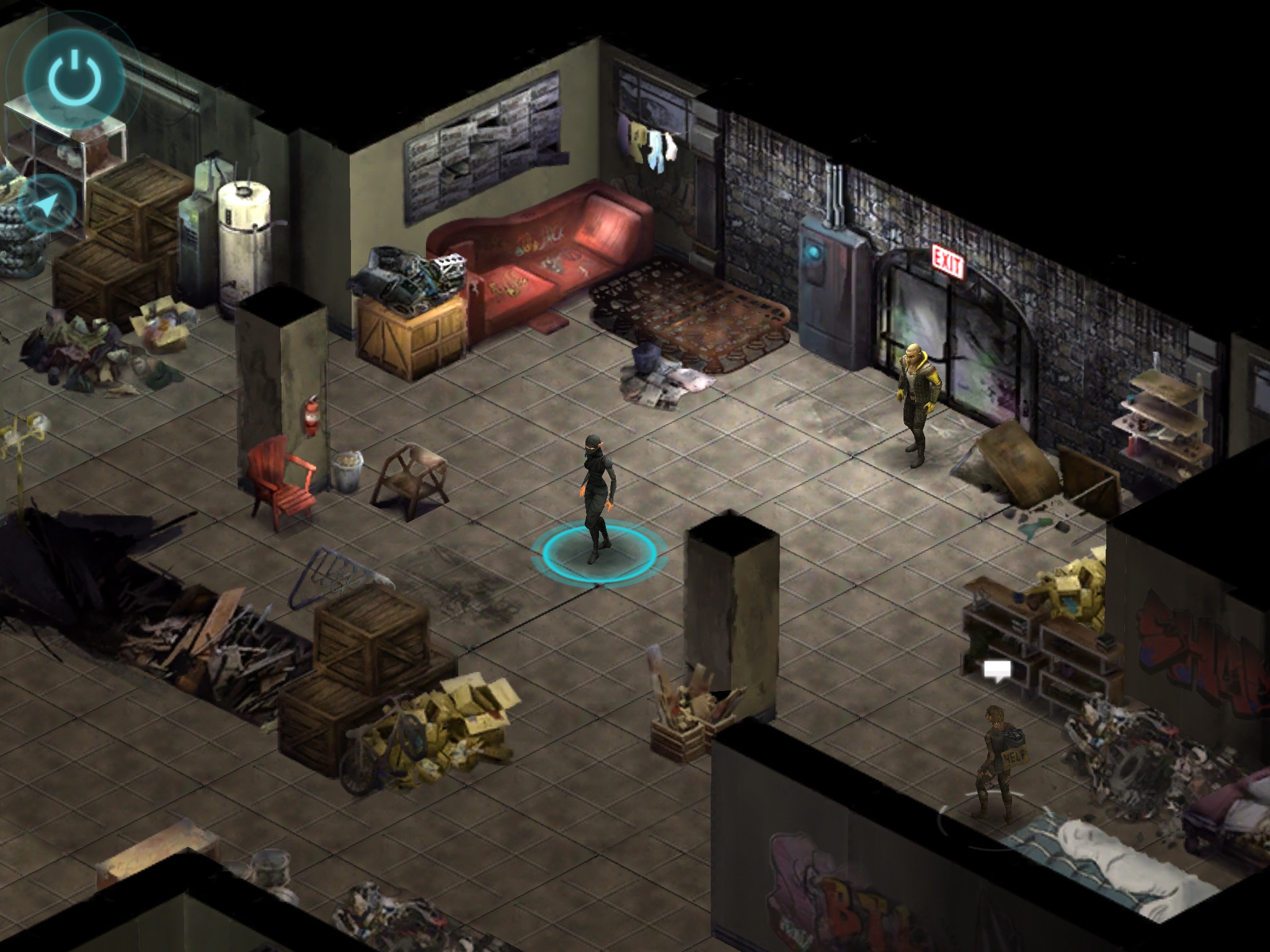
The 1980s were also a big decade for pen and paper RPGs. Dungeons & Dragons had grown popular enough to become the latest thing to blame the ills of the youth upon, and it wouldn't have taken much work to find a game in progress on any American university campus at any time of day. While TSR was the main beneficiary of that boom, many other publishers took a swing at catching a bit of its success. I could spend a whole column writing about all of them, but for now, let's skip on over to FASA Corporation. Founded in 1980 by Jordan Weisman and L. Ross Babcock in Chicago, Illinois, FASA initially started off making supplements for Game Designers' Workshop's Traveller role-playing game. They soon started making their own games, however, kicking things off in 1982 with an officially licensed Star Trek pen-and-paper RPG. Their first original property was 1984's BattleTech, an excellent mech-battling strategy board game that was clearly inspired by the popular RoboTech animated series. BattleTech and its pen-and-paper spin-off MechWarrior remain one of the company's two major enduring symbols.
FASA's other major success came in 1989 when they published the first edition of Shadowrun, a cyberpunk fantasy RPG. The game owes a clear debt to William Gibson and his novels, to be sure. It's not just a straight copy of that setting, however. While it retains most of the cyberpunk stylings, Shadowrun also incorporated many Tolkein-esque fantasy tropes such as dragons, elves, and wizards. The unusual setting made it a major hit, albeit in a rapidly-diminishing market. Like its sister franchise BattleTech, Shadowrun would eventually become more famous for its works in the medium that nearly killed board and pen-and-paper games.
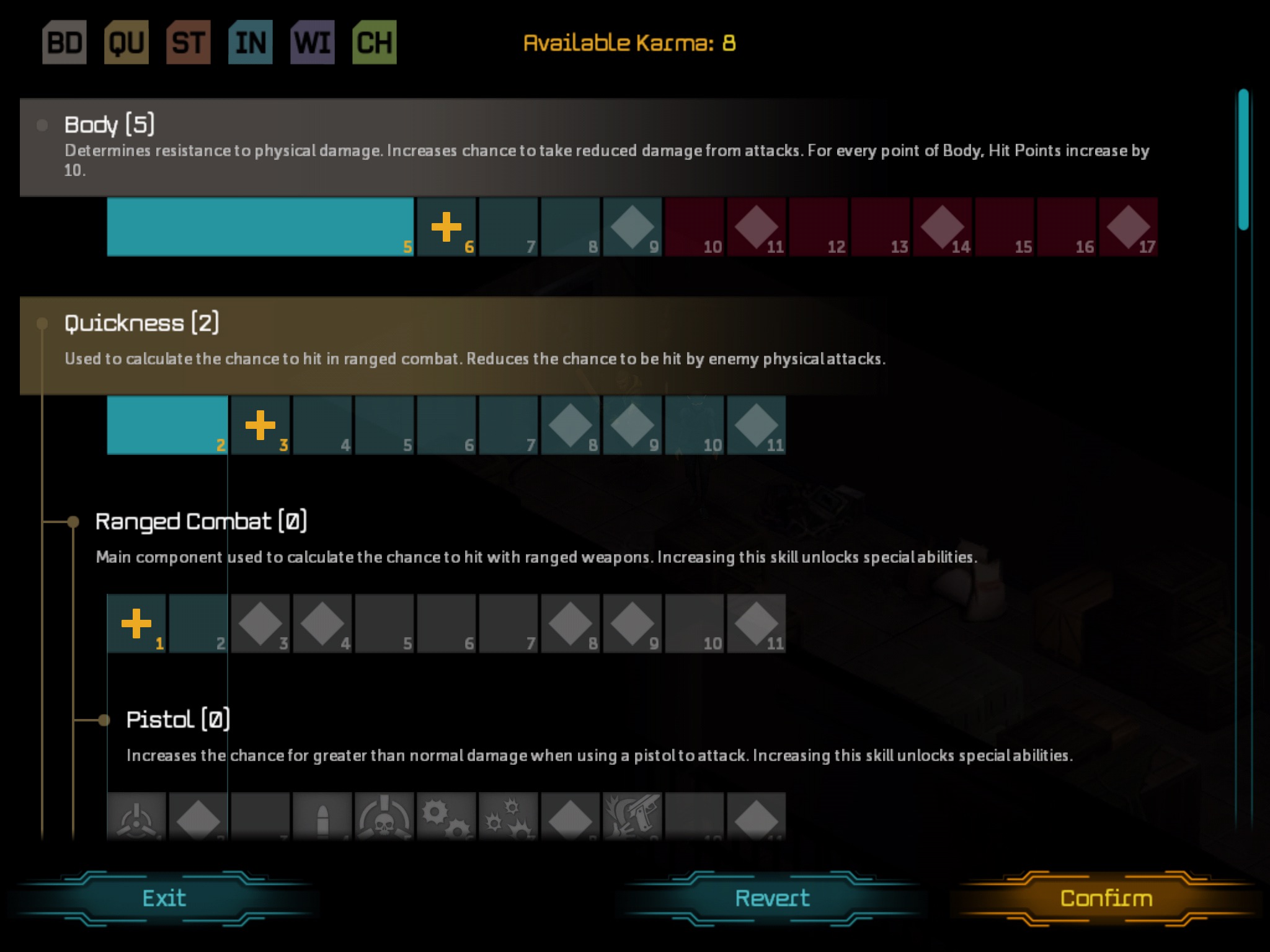
The first Shadowrun video game hit Nintendo's Super NES in 1993, developed by Australia's Beam Software and published by Data East. The choice of developer ended up painting the Shadowrun world in a new light. While the basic story outline was adapted from Shadowrun co-creator Robert N. Charrette's Never Deal With A Dragon, the world of the game was heavily influenced by a previous game done by Beam Software. Nightshade, an NES title whose development was helmed by Paul Kidd, was a weird superhero-noir adventure game that reveled as much in its bizarre sense of humor as it did in its grit and grime. Circumstances would lead to Paul Kidd taking over Shadowrun SNES's lead designer position, but even before that, the team had drawn a lot of inspiration from Nightshade. This inspiration introduced a lot of crime noir and silly comedy to the Shadowrun world, qualities that would come to be associated with the brand over the long run.
Meanwhile, over on the SEGA Genesis, SEGA and BlueSky Software were doing their own adaptation of Shadowrun. Released in 1994, the Genesis Shadowrun was a completely different game from the SNES one. Even the gameplay camera perspective was different, using a top-down 3/4ths view in lieu of the SNES game's isometric camera. Both games had their fans, with opinions split as to which of the two is the better game. The SNES version's greater ubiquity, having been released in three major regions as opposed to the Genesis version's North American-exclusive release, has made it the more famous of the two worldwide, however. If the Shadowrun franchise has a face, it probably belongs to the SNES game's protagonist, Jake Armitage. Both games were quite good, and the unusual setting helped them stand out in a sea of fantasy RPGs. Well, okay, it was the Western 16-bit console era, so it was more like a pond of fantasy RPGs.
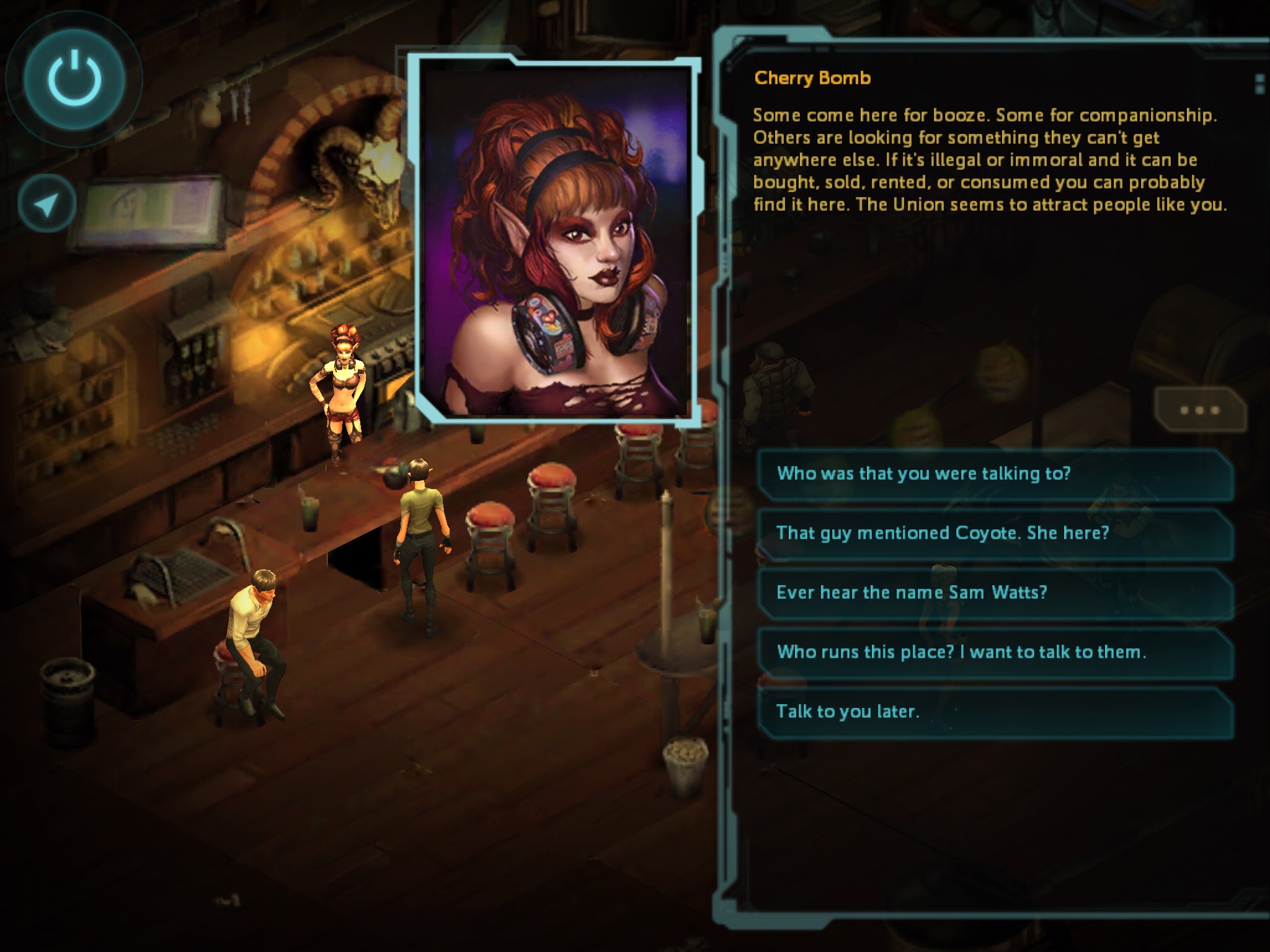
Interestingly, there's a Japan-exclusive Shadowrun game for the SEGA-CD. Released in 1996, it was the last official game release for the SEGA-CD in any region. The game was developed by Compile, best known for their shoot-em-ups and the puzzle game series Puyo Puyo. Many of members of Compile would go on to form Compile Heart, a developer that now mainly creates RPGs like Hyperdimension Neptunia and Agarest War. Shadowrun SEGA-CD is an interesting game in that it takes place in Japan rather than Seattle. One of the premises that goes with that shift in setting is that there are no orcs or trolls allowed in Shadowrun's Japan. Yes, only the races that can be easily changed into cute, big-chested anime girls were included. The combat system in the game is turn-based and uses virtual dice, making it a closer adaptation of the source in mechanics if not in art style.
Not long after that, FASA Corporation started to hit the skids. The physical game business was in rough shape, so the company opted to shut down in 2001 and simply license out their brands rather than try to fight a changing market. The board game and pen and paper rights to many of their games were sold to WizKids, a company founded by Jordan Weisman, one of FASA's original founders. The video game branch of the company went to Microsoft, who were looking for ways to fill out their Xbox development roster. FASA Interactive would find strong success on the original Xbox with 2002's Mechassault, a game based on the popular BattleTech brand. In spite of many rumors, the Shadowrun name wouldn't appear on a game again until 2007, and I think it's safe to say that when it did appear, it wasn't quite in the form that people were hoping for.
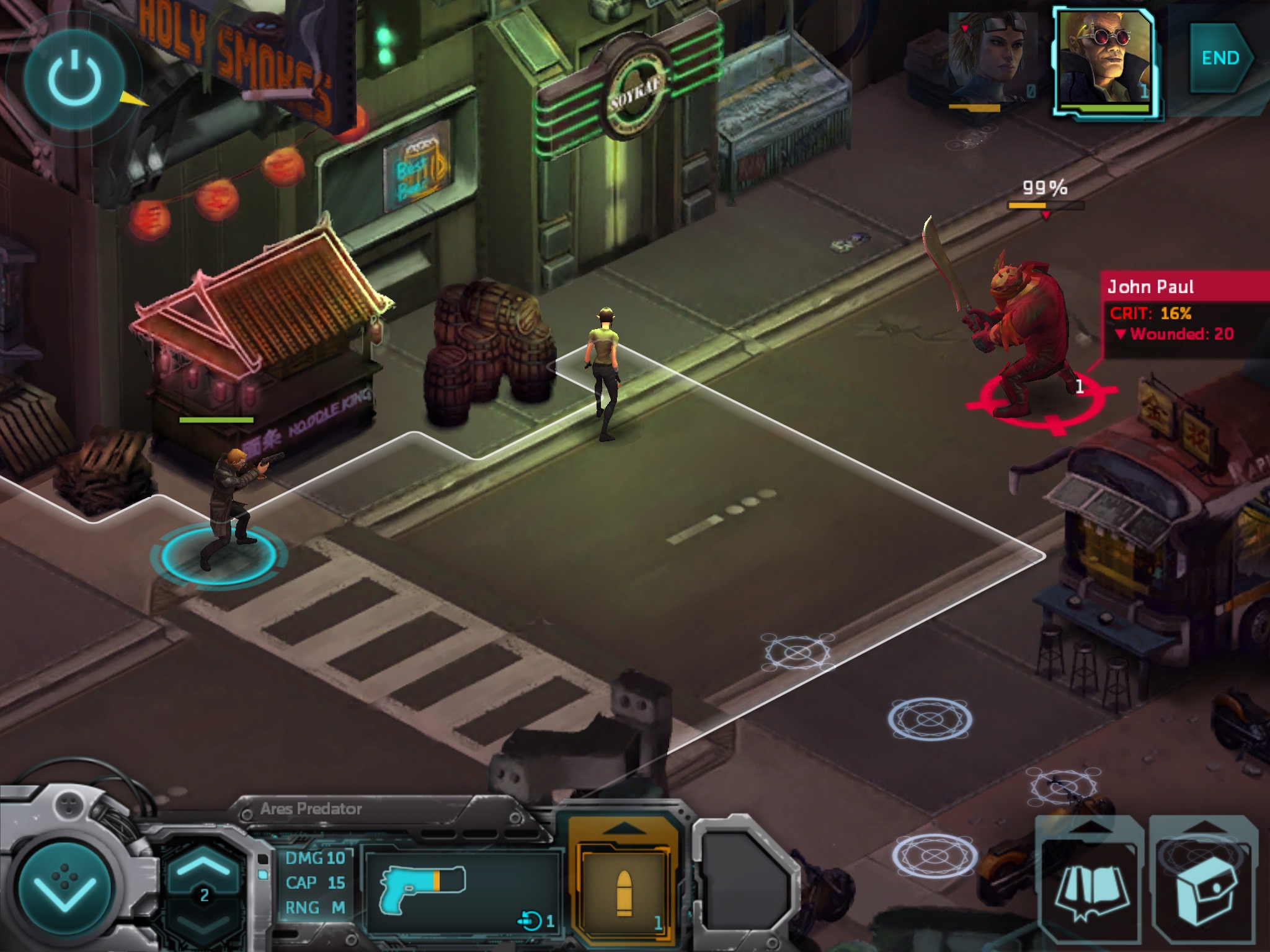
Shadowrun's glorious return to video games came in the form of an Xbox 360/Windows Vista-exclusive, multiplayer-only, first-person shooter. As a fun game, take a shot of whiskey for every part of the previous sentence that makes no sense at all for Shadowrun. Also, hide your keys, because you're drunk now. While it wasn't a bad game on its own merits, it was definitely not what fans of the franchise wanted. The game sold quite poorly and FASA Studio was shut down later that year. Another company Weisman was involved with, Smith & Tinker, licensed the rights to Shadowrun and the other FASA properties from Microsoft, who no longer had any plans for the IP. But wait, there's yet another Weisman co-founded company we need to mention: Harebrained Schemes.
It took a while to put things together, but in 2012, spurred by the success of Doublefine's smashing Kickstarter campaign for what would eventually become Broken Age, Harebrained Schemes launched a Kickstarter campaign to raise funds for a new Shadowrun RPG called Shadowrun Returns []. The campaign kicked off in April of 2012 and was a big success, raising a whopping $1.8 million on an initial goal of $400,000. Unlike many other sordid Kickstarter affairs, Harebrained Schemes actually finished their project in the same calendar year it was originally announced for. Sure, it was six months late, but by Kickstarter standards, that's around a year and a half early. All kidding aside, the game had been scoped well. The first release consisted of a single module that contained about 15 hours worth of gameplay, while stretch goals mostly focused on things they could add in post-release. The game came out on Windows and OS X in July of 2013 and on iPad and Android in September of the same year.
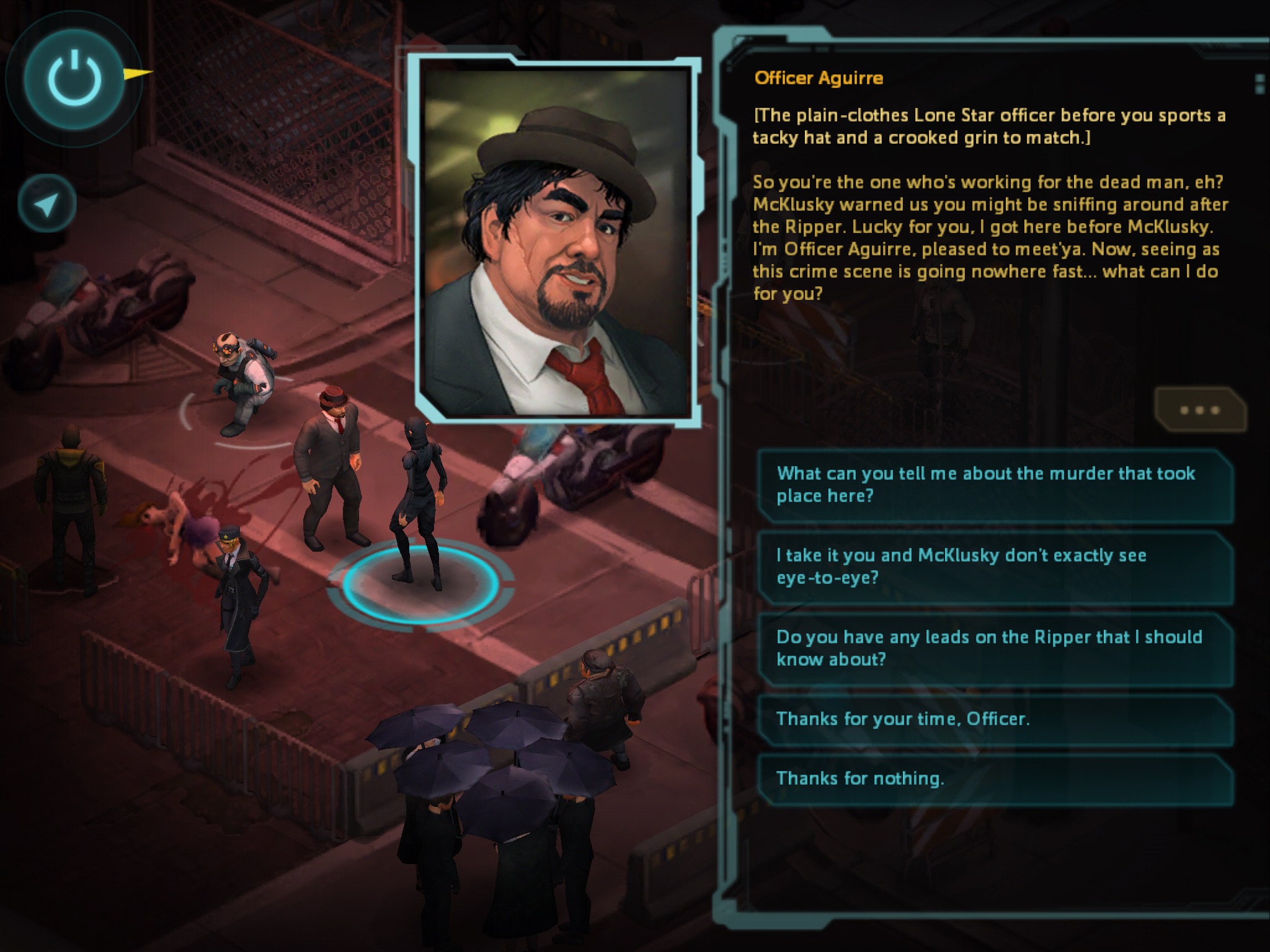
So, for those who waited around 20 years to get another Shadowrun RPG video game, was it worth it? The reception was good but not great upon its release on computers, with bugs and design issues dampening the fun for some players. Many of the complaints concerned its controversial save system. In the original version of Shadowrun Returns, you couldn't save and resume anywhere you wanted. Instead, the game auto-saved at certain points, and you just had to rely on that system to work the way you hoped it would. Some people also didn't care for how linear the game was, as you were mostly shunted from one small area to the next without much control.
Its progression feels more like a JRPG than a WRPG, which is probably not what players were expecting. Other players felt the combat system was too simple in places and too punishing in others, while many lamented the generic squad members that fill out your party for much of the game. Still, the overall feeling about the game was that it was a solid attempt. It got even more praise when it released on iPad and Android, likely due to overall weaker competition on mobile platforms. The mobile release was even buggier than the computer version at first, however, and that may have spoiled the launch some.
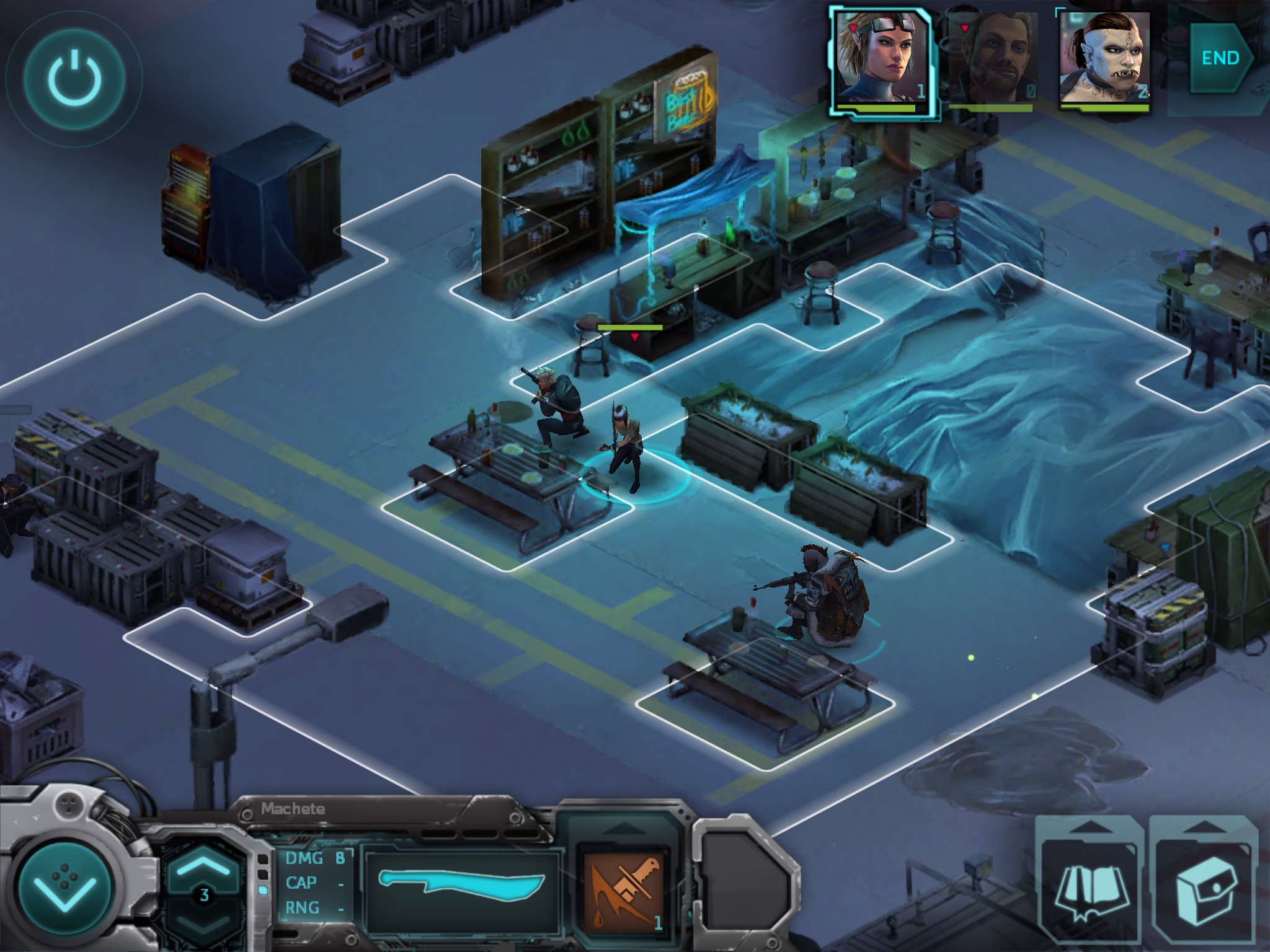
The next game in the series, Shadowrun: Dragonfall [], addressed most of these complaints and met with an overall better reception across the board. Sadly for mobile RPG fans, that was the last installment to come to the platform. Apparently, Harebrained Schemes wanted to push the tech more, and that meant they had to leave tablets behind for the foreseeable future. A third installment titled Shadowrun: Hong Kong was released on computers in August of 2015, and while it didn't get the same level of critical praise as Dragonfall, it seems to have gone over well enough. For the time being, the developer appears to be moving on from Shadowrun. This year, they're releasing an original RPG for computers and consoles, and late last year, they had another enormously successful Kickstarter to revive BattleTech.
It seems unlikely that the developer will return to mobile anytime soon, which leaves both Shadowrun Returns and Shadowrun: Dragonfall in tricky positions. The games already had a lot of issues with bugs, so I can't help but be a little concerned that they might completely break somewhere down the road and be left abandoned. At least in the case of Shadowrun Returns, the game received a handful of post-release updates to fix most of its issues. Shadowrun: Dragonfall received two updates but still has several problems. While it's certainly playable, the iOS version really did need more love and care from its creator. Shadowrun Returns mostly got bug fixes in its patches, but one major update improved the save system and enhanced the UI, welcome additions for the mobile gaming lifestyle.
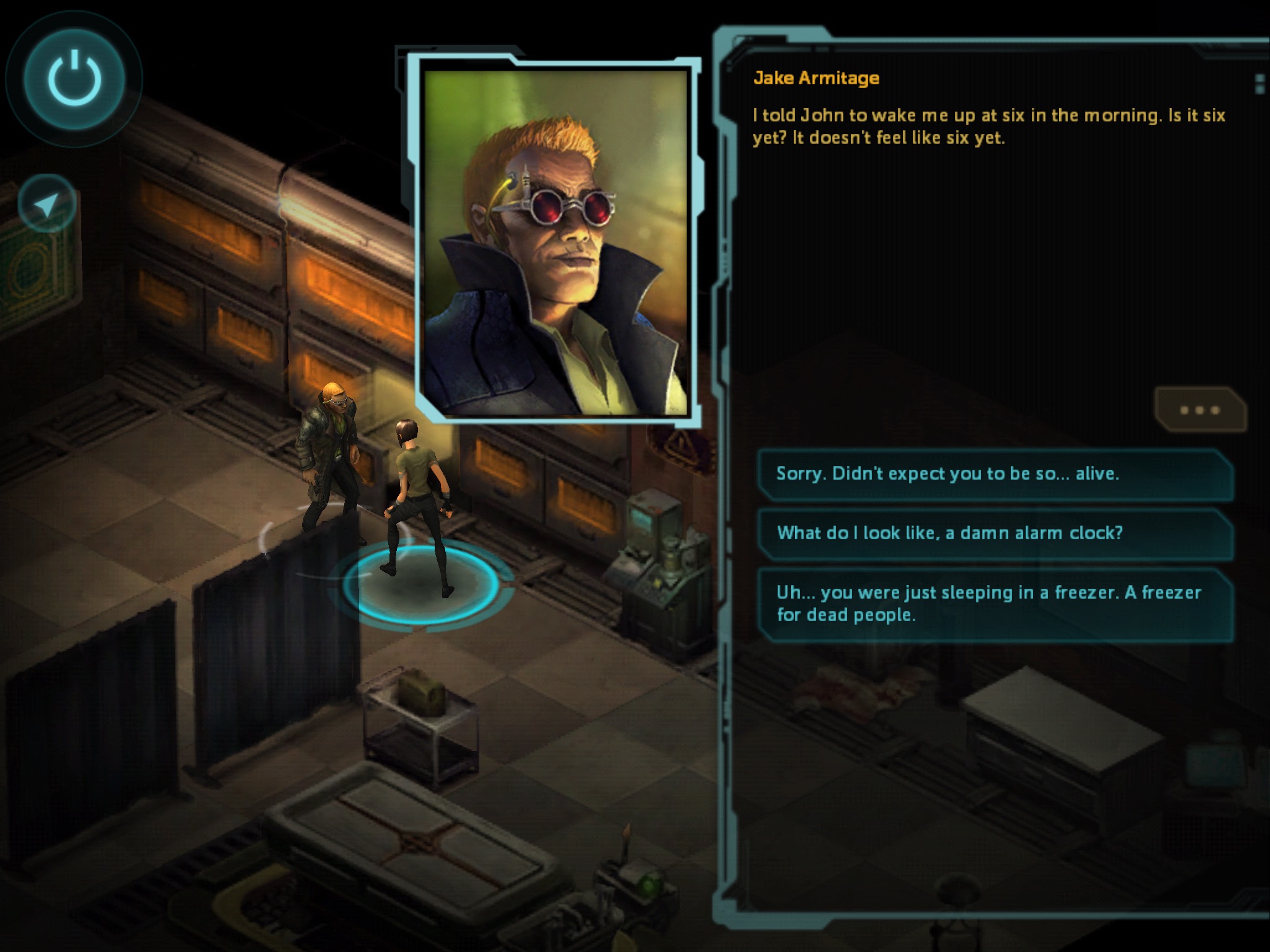
The linear nature of Shadowrun Returns makes for a different kind of replay. You can roll a different character, and it certainly pays to specialize when it comes to customizing them, but the game doesn't change very much no matter what you do. There are places where having one set of skills or another will let you go about things in a slightly different way or open up a few extra credits and items for you, but these are small divergences. I actually hadn't replayed this game since just before I played Dragonfall, and that game certainly makes this one feel less fully-formed by comparison. I don't mind the linearity or the shorter running time. Depending on my mood, I sometimes even prefer those things. But what really hurts it is the lack of developed characters for your party. The few proper characters you get feel like a tease of something better, though I love that the game brings in characters from previous games for cameos. Unfortunately, once you get into the game proper, you're mostly left with a bunch of hired goons. It's awfully hard to care about them one way or another.
As for the uneven difficulty, having played through the game before, it was far less of an issue this time. I knew where the spikes were going to happen and could prepare for them. I knew which skills were useful and which ones weren't. I knew how to spend my cash wisely and which supplies were worth splashing out for. It's certainly a flaw if a game optimally requires a previous playthrough to come to proper grips with its difficulty, but that's hardly a problem that Shadowrun Returns carries alone in the RPG genre. On a replay, the game is almost a little too easy, to be honest. Nevertheless, it remains quite an enjoyable game, and while there isn't a lot of room to change things up, it's at least fun to explore alternate dialogue options. The writing is generally pretty good, and the story is twisty enough to enjoy a second or third time.

That's just my take on Shadowrun Returns, though. What do you all think? I want to hear your comments, so please leave them below the article, swing by in the forums, or send me a tweet at . As for me, I'll be back next week with another RPG. Thanks for reading!
Next Week's Reload: Alphadia []

The 1980s were a weird time in America. If the 1960s had been a wild alcohol-soaked and drug-fueled party, the 1970s were more like spending the night curled up beside the toilet because you partied a little too hard. The 1980s started with a wicked hangover, but the country put on its suit, drank a few cups of coffee, and headed back to work. Having mostly forgotten its crisis of conscience that happened after the war in Vietnam, the American nation started to puff up its pride once again. It was an era of crass commercialization, vapid but catchy music, a time when neon colors and the American flag were considered reasonable attire. But behind the bright surface, it wasn't hard to see the darkness swelling up. The same Reaganomics that helped bring the country out of recession had widened the divide between the haves and the have-nots, the government was caught secretly sticking its fingers into international affairs, and xenophobia was running deep thanks to a surging Asian economy and troubles in the Middle East. Luckily, things have totally changed since then.
It was in this atmosphere that one of the most important fiction novels of our time was written. Neuromancer, by William Gibson, probably didn't seem like much at first in 1984. It was a strange piece of dystopian science-fiction that seemed to follow in the footsteps of the bizarre, brilliant works of Philip K. Dick. It didn't take long for the book to catch on with science-fiction fans, and it quickly became a cult favorite in the rising counter-culture that was forming. Its world reflected that of its contemporary America: mega-corporations, the fearful embrace of rapidly-improving technology, terrorism as a means of social control, the rising influence of Japan, and how a person could hold on to their humanity in a world that seemed designed to grind it down a little bit every day. While Neuromancer didn't create the cyberpunk sub-genre, it is to that label as Dragon Quest [] is to JRPGs: a heavily influential work from which many others would draw from ever after. If for some reason you haven't read it yet, I strongly recommend it.

The 1980s were also a big decade for pen and paper RPGs. Dungeons & Dragons had grown popular enough to become the latest thing to blame the ills of the youth upon, and it wouldn't have taken much work to find a game in progress on any American university campus at any time of day. While TSR was the main beneficiary of that boom, many other publishers took a swing at catching a bit of its success. I could spend a whole column writing about all of them, but for now, let's skip on over to FASA Corporation. Founded in 1980 by Jordan Weisman and L. Ross Babcock in Chicago, Illinois, FASA initially started off making supplements for Game Designers' Workshop's Traveller role-playing game. They soon started making their own games, however, kicking things off in 1982 with an officially licensed Star Trek pen-and-paper RPG. Their first original property was 1984's BattleTech, an excellent mech-battling strategy board game that was clearly inspired by the popular RoboTech animated series. BattleTech and its pen-and-paper spin-off MechWarrior remain one of the company's two major enduring symbols.
FASA's other major success came in 1989 when they published the first edition of Shadowrun, a cyberpunk fantasy RPG. The game owes a clear debt to William Gibson and his novels, to be sure. It's not just a straight copy of that setting, however. While it retains most of the cyberpunk stylings, Shadowrun also incorporated many Tolkein-esque fantasy tropes such as dragons, elves, and wizards. The unusual setting made it a major hit, albeit in a rapidly-diminishing market. Like its sister franchise BattleTech, Shadowrun would eventually become more famous for its works in the medium that nearly killed board and pen-and-paper games.

The first Shadowrun video game hit Nintendo's Super NES in 1993, developed by Australia's Beam Software and published by Data East. The choice of developer ended up painting the Shadowrun world in a new light. While the basic story outline was adapted from Shadowrun co-creator Robert N. Charrette's Never Deal With A Dragon, the world of the game was heavily influenced by a previous game done by Beam Software. Nightshade, an NES title whose development was helmed by Paul Kidd, was a weird superhero-noir adventure game that reveled as much in its bizarre sense of humor as it did in its grit and grime. Circumstances would lead to Paul Kidd taking over Shadowrun SNES's lead designer position, but even before that, the team had drawn a lot of inspiration from Nightshade. This inspiration introduced a lot of crime noir and silly comedy to the Shadowrun world, qualities that would come to be associated with the brand over the long run.
Meanwhile, over on the SEGA Genesis, SEGA and BlueSky Software were doing their own adaptation of Shadowrun. Released in 1994, the Genesis Shadowrun was a completely different game from the SNES one. Even the gameplay camera perspective was different, using a top-down 3/4ths view in lieu of the SNES game's isometric camera. Both games had their fans, with opinions split as to which of the two is the better game. The SNES version's greater ubiquity, having been released in three major regions as opposed to the Genesis version's North American-exclusive release, has made it the more famous of the two worldwide, however. If the Shadowrun franchise has a face, it probably belongs to the SNES game's protagonist, Jake Armitage. Both games were quite good, and the unusual setting helped them stand out in a sea of fantasy RPGs. Well, okay, it was the Western 16-bit console era, so it was more like a pond of fantasy RPGs.

Interestingly, there's a Japan-exclusive Shadowrun game for the SEGA-CD. Released in 1996, it was the last official game release for the SEGA-CD in any region. The game was developed by Compile, best known for their shoot-em-ups and the puzzle game series Puyo Puyo. Many of members of Compile would go on to form Compile Heart, a developer that now mainly creates RPGs like Hyperdimension Neptunia and Agarest War. Shadowrun SEGA-CD is an interesting game in that it takes place in Japan rather than Seattle. One of the premises that goes with that shift in setting is that there are no orcs or trolls allowed in Shadowrun's Japan. Yes, only the races that can be easily changed into cute, big-chested anime girls were included. The combat system in the game is turn-based and uses virtual dice, making it a closer adaptation of the source in mechanics if not in art style.
Not long after that, FASA Corporation started to hit the skids. The physical game business was in rough shape, so the company opted to shut down in 2001 and simply license out their brands rather than try to fight a changing market. The board game and pen and paper rights to many of their games were sold to WizKids, a company founded by Jordan Weisman, one of FASA's original founders. The video game branch of the company went to Microsoft, who were looking for ways to fill out their Xbox development roster. FASA Interactive would find strong success on the original Xbox with 2002's Mechassault, a game based on the popular BattleTech brand. In spite of many rumors, the Shadowrun name wouldn't appear on a game again until 2007, and I think it's safe to say that when it did appear, it wasn't quite in the form that people were hoping for.

Shadowrun's glorious return to video games came in the form of an Xbox 360/Windows Vista-exclusive, multiplayer-only, first-person shooter. As a fun game, take a shot of whiskey for every part of the previous sentence that makes no sense at all for Shadowrun. Also, hide your keys, because you're drunk now. While it wasn't a bad game on its own merits, it was definitely not what fans of the franchise wanted. The game sold quite poorly and FASA Studio was shut down later that year. Another company Weisman was involved with, Smith & Tinker, licensed the rights to Shadowrun and the other FASA properties from Microsoft, who no longer had any plans for the IP. But wait, there's yet another Weisman co-founded company we need to mention: Harebrained Schemes.
It took a while to put things together, but in 2012, spurred by the success of Doublefine's smashing Kickstarter campaign for what would eventually become Broken Age, Harebrained Schemes launched a Kickstarter campaign to raise funds for a new Shadowrun RPG called Shadowrun Returns []. The campaign kicked off in April of 2012 and was a big success, raising a whopping $1.8 million on an initial goal of $400,000. Unlike many other sordid Kickstarter affairs, Harebrained Schemes actually finished their project in the same calendar year it was originally announced for. Sure, it was six months late, but by Kickstarter standards, that's around a year and a half early. All kidding aside, the game had been scoped well. The first release consisted of a single module that contained about 15 hours worth of gameplay, while stretch goals mostly focused on things they could add in post-release. The game came out on Windows and OS X in July of 2013 and on iPad and Android in September of the same year.

So, for those who waited around 20 years to get another Shadowrun RPG video game, was it worth it? The reception was good but not great upon its release on computers, with bugs and design issues dampening the fun for some players. Many of the complaints concerned its controversial save system. In the original version of Shadowrun Returns, you couldn't save and resume anywhere you wanted. Instead, the game auto-saved at certain points, and you just had to rely on that system to work the way you hoped it would. Some people also didn't care for how linear the game was, as you were mostly shunted from one small area to the next without much control.
Its progression feels more like a JRPG than a WRPG, which is probably not what players were expecting. Other players felt the combat system was too simple in places and too punishing in others, while many lamented the generic squad members that fill out your party for much of the game. Still, the overall feeling about the game was that it was a solid attempt. It got even more praise when it released on iPad and Android, likely due to overall weaker competition on mobile platforms. The mobile release was even buggier than the computer version at first, however, and that may have spoiled the launch some.

The next game in the series, Shadowrun: Dragonfall [], addressed most of these complaints and met with an overall better reception across the board. Sadly for mobile RPG fans, that was the last installment to come to the platform. Apparently, Harebrained Schemes wanted to push the tech more, and that meant they had to leave tablets behind for the foreseeable future. A third installment titled Shadowrun: Hong Kong was released on computers in August of 2015, and while it didn't get the same level of critical praise as Dragonfall, it seems to have gone over well enough. For the time being, the developer appears to be moving on from Shadowrun. This year, they're releasing an original RPG for computers and consoles, and late last year, they had another enormously successful Kickstarter to revive BattleTech.
It seems unlikely that the developer will return to mobile anytime soon, which leaves both Shadowrun Returns and Shadowrun: Dragonfall in tricky positions. The games already had a lot of issues with bugs, so I can't help but be a little concerned that they might completely break somewhere down the road and be left abandoned. At least in the case of Shadowrun Returns, the game received a handful of post-release updates to fix most of its issues. Shadowrun: Dragonfall received two updates but still has several problems. While it's certainly playable, the iOS version really did need more love and care from its creator. Shadowrun Returns mostly got bug fixes in its patches, but one major update improved the save system and enhanced the UI, welcome additions for the mobile gaming lifestyle.

The linear nature of Shadowrun Returns makes for a different kind of replay. You can roll a different character, and it certainly pays to specialize when it comes to customizing them, but the game doesn't change very much no matter what you do. There are places where having one set of skills or another will let you go about things in a slightly different way or open up a few extra credits and items for you, but these are small divergences. I actually hadn't replayed this game since just before I played Dragonfall, and that game certainly makes this one feel less fully-formed by comparison. I don't mind the linearity or the shorter running time. Depending on my mood, I sometimes even prefer those things. But what really hurts it is the lack of developed characters for your party. The few proper characters you get feel like a tease of something better, though I love that the game brings in characters from previous games for cameos. Unfortunately, once you get into the game proper, you're mostly left with a bunch of hired goons. It's awfully hard to care about them one way or another.
As for the uneven difficulty, having played through the game before, it was far less of an issue this time. I knew where the spikes were going to happen and could prepare for them. I knew which skills were useful and which ones weren't. I knew how to spend my cash wisely and which supplies were worth splashing out for. It's certainly a flaw if a game optimally requires a previous playthrough to come to proper grips with its difficulty, but that's hardly a problem that Shadowrun Returns carries alone in the RPG genre. On a replay, the game is almost a little too easy, to be honest. Nevertheless, it remains quite an enjoyable game, and while there isn't a lot of room to change things up, it's at least fun to explore alternate dialogue options. The writing is generally pretty good, and the story is twisty enough to enjoy a second or third time.

That's just my take on Shadowrun Returns, though. What do you all think? I want to hear your comments, so please leave them below the article, swing by in the forums, or send me a tweet at . As for me, I'll be back next week with another RPG. Thanks for reading!
Next Week's Reload: Alphadia []
